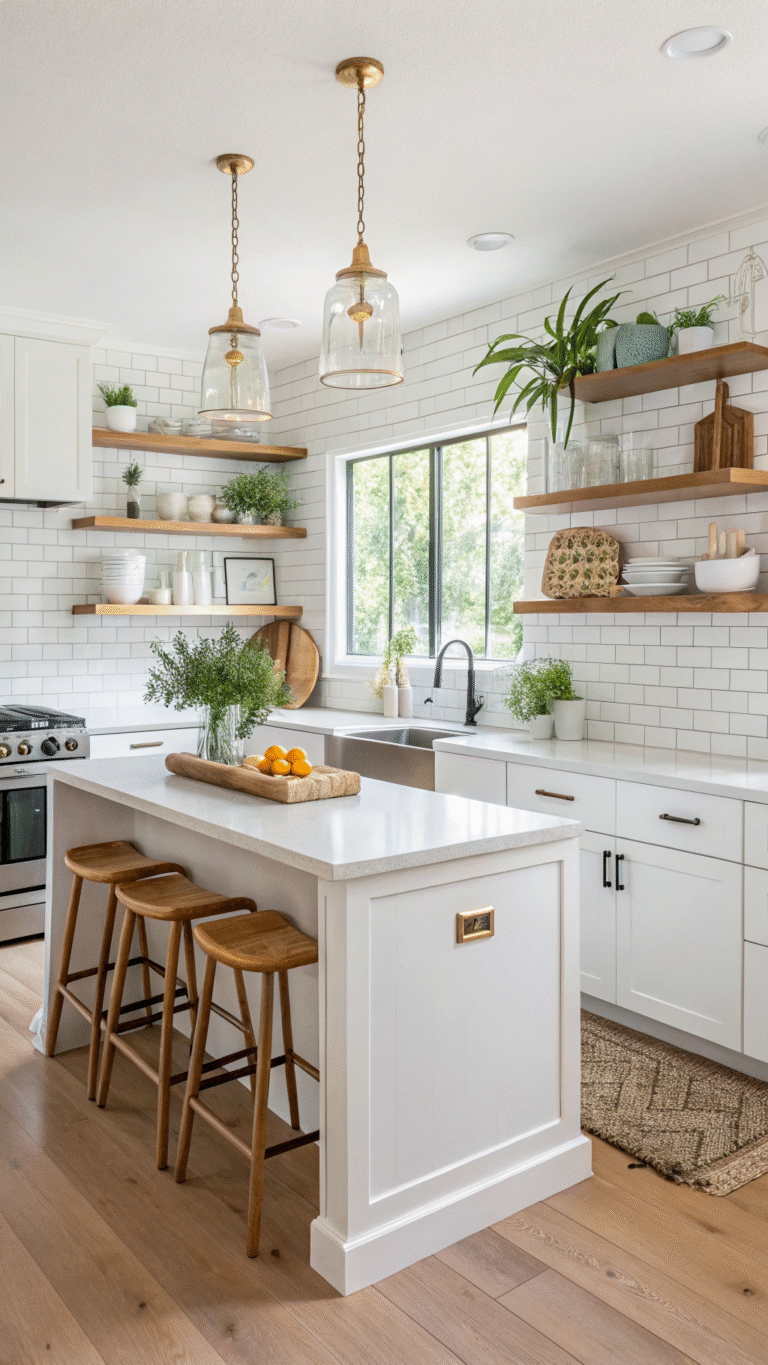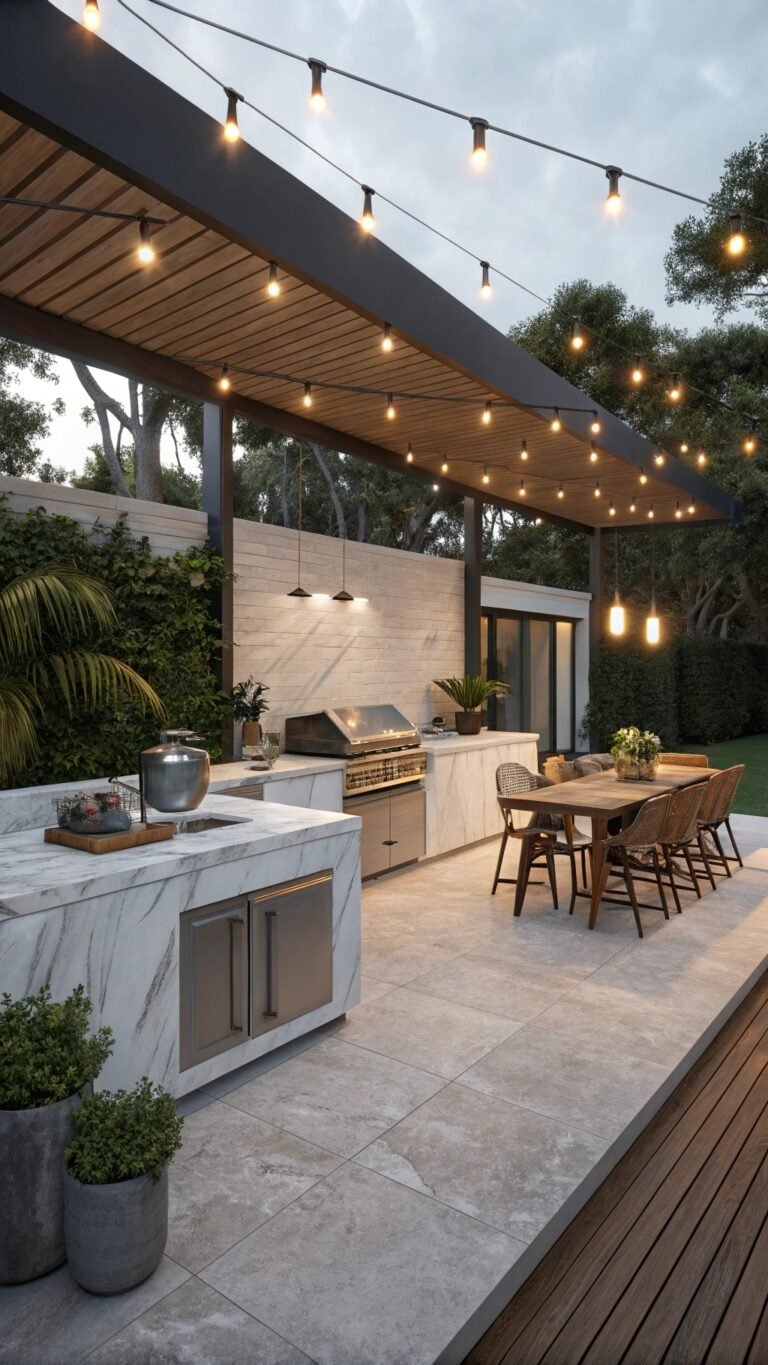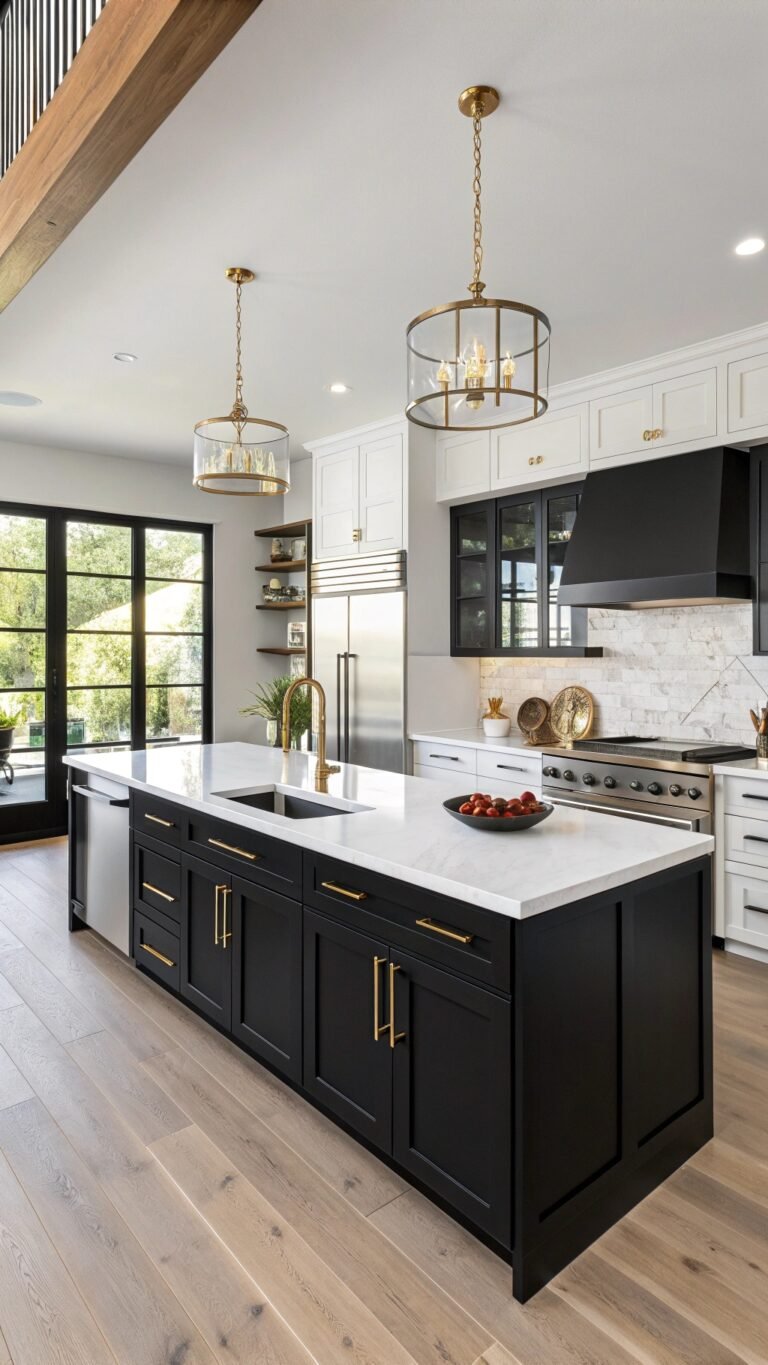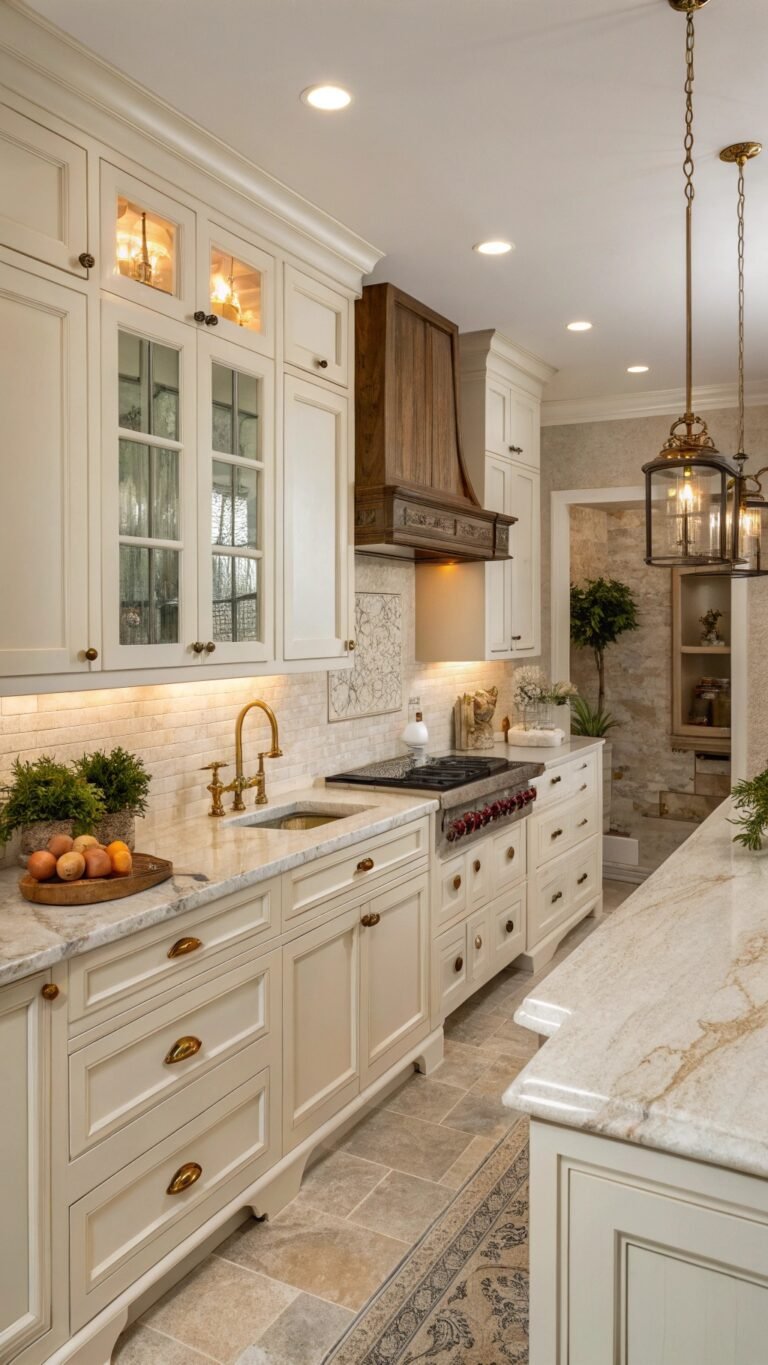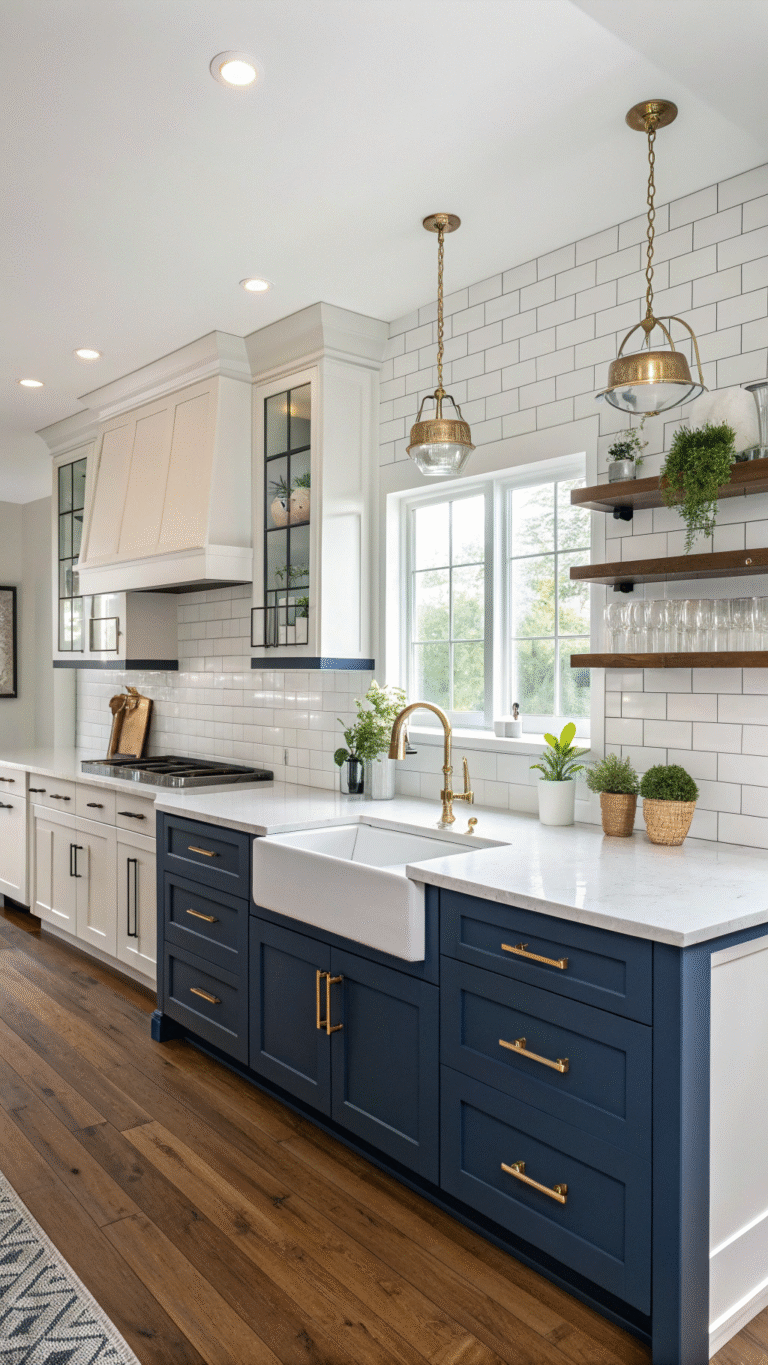Kitchen Decor: 12 Stylish Ideas That Make Everyday Cooking Look Editorial
Kitchen decor is booming because small, intentional styling delivers magazine-level impact without remodeling.
Designers are leaning into layered lighting, natural textures, sculptural stone, and curated open displays to make hardworking rooms feel warm and photogenic.
1) Layered Lighting as Decor
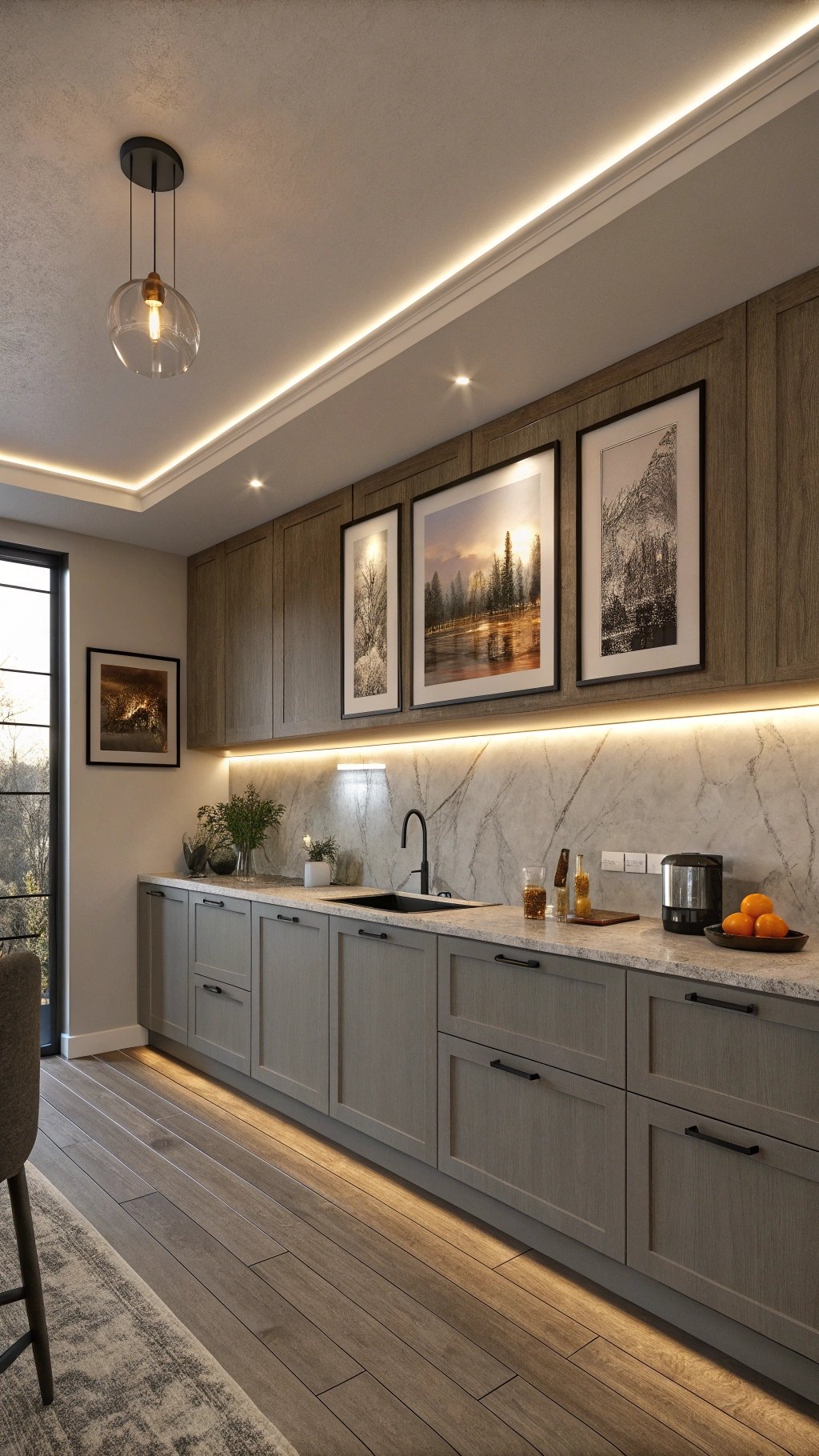
Ambient, task, and accent light double as design when you treat fixtures like jewelry. A slim ceiling fixture keeps sightlines clear, under-cabinet strips brighten prep zones, and a small picture light over art adds evening glow.
Use warm 2700–3000K bulbs to flatter wood, stone, and food. Dimmers create “Prep,” “Dine,” and “Night” scenes so the kitchen shifts with your day without adding clutter or cost.
What makes something unique:
Hide LED tape above tall units to graze the ceiling and visually raise height, then add a toe-kick glow for safe midnight snack runs. A tiny uplight behind a plant animates shadows on tile.
When light becomes part of your decor strategy, you can own fewer objects and the room still feels complete, calm, and intentionally designed.
2) Stone & Tile Backsplash Showcase
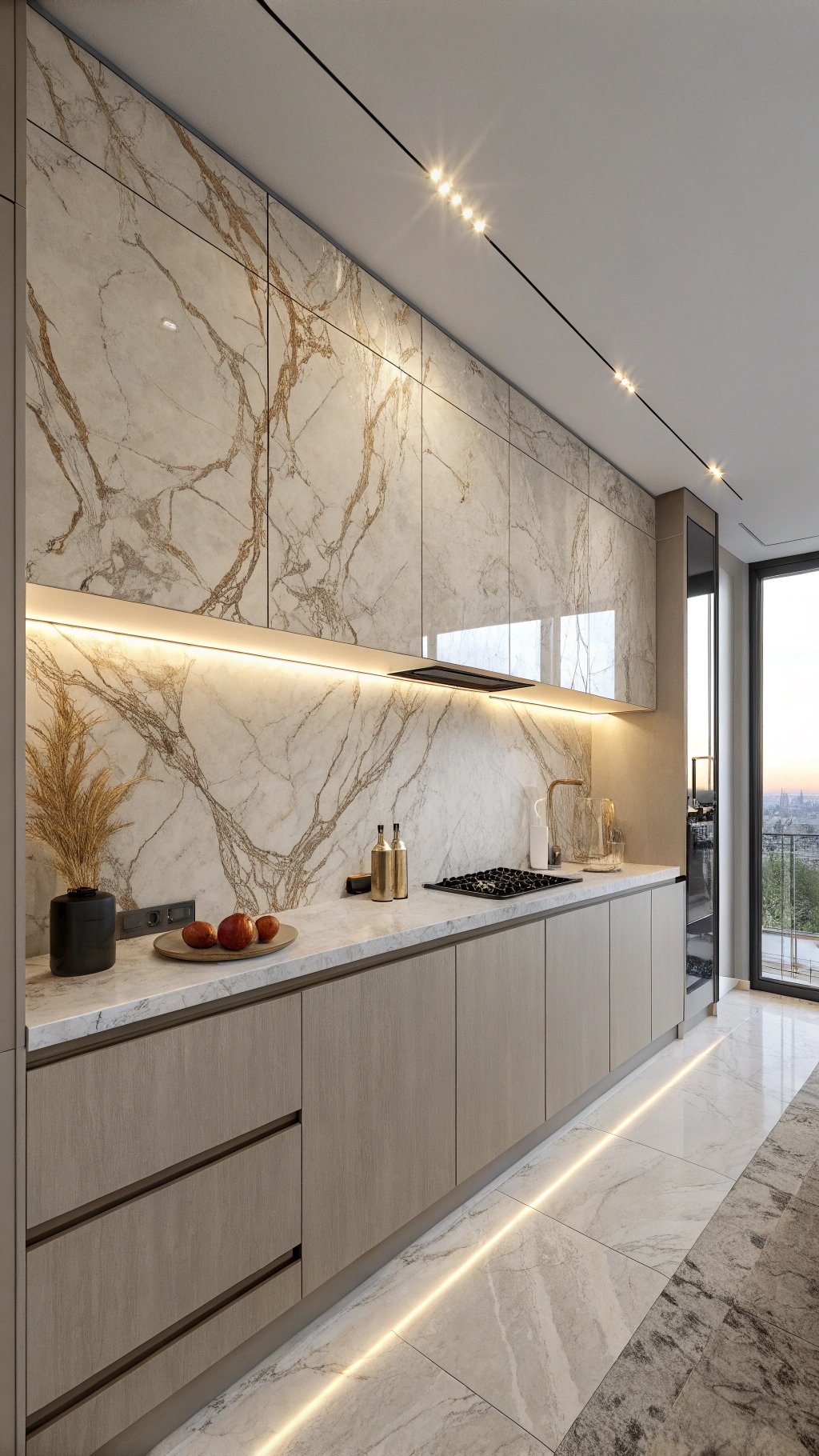
A statement backsplash can anchor the entire palette. Full-height slab stone reduces grout lines and looks sculptural, while handmade tile adds movement and artisanal charm.
Keep counters edited—oil, salt, and one cutting board—so the surface reads as art. Color-match outlets to the wall to avoid visual interruptions and let veining or tile pattern do the talking.
What makes something unique:
Book-match slab veining for a mirrored effect, or lay zellige in a stacked pattern with irregular edges to catch light.
Add a narrow stone ledge for favorite spices and a bud vase. A warm wall-wash at night deepens shadows in the texture, turning the backsplash into a gallery piece that rewards both cooking and lingering.
3) Open Shelving, Curated & Calm
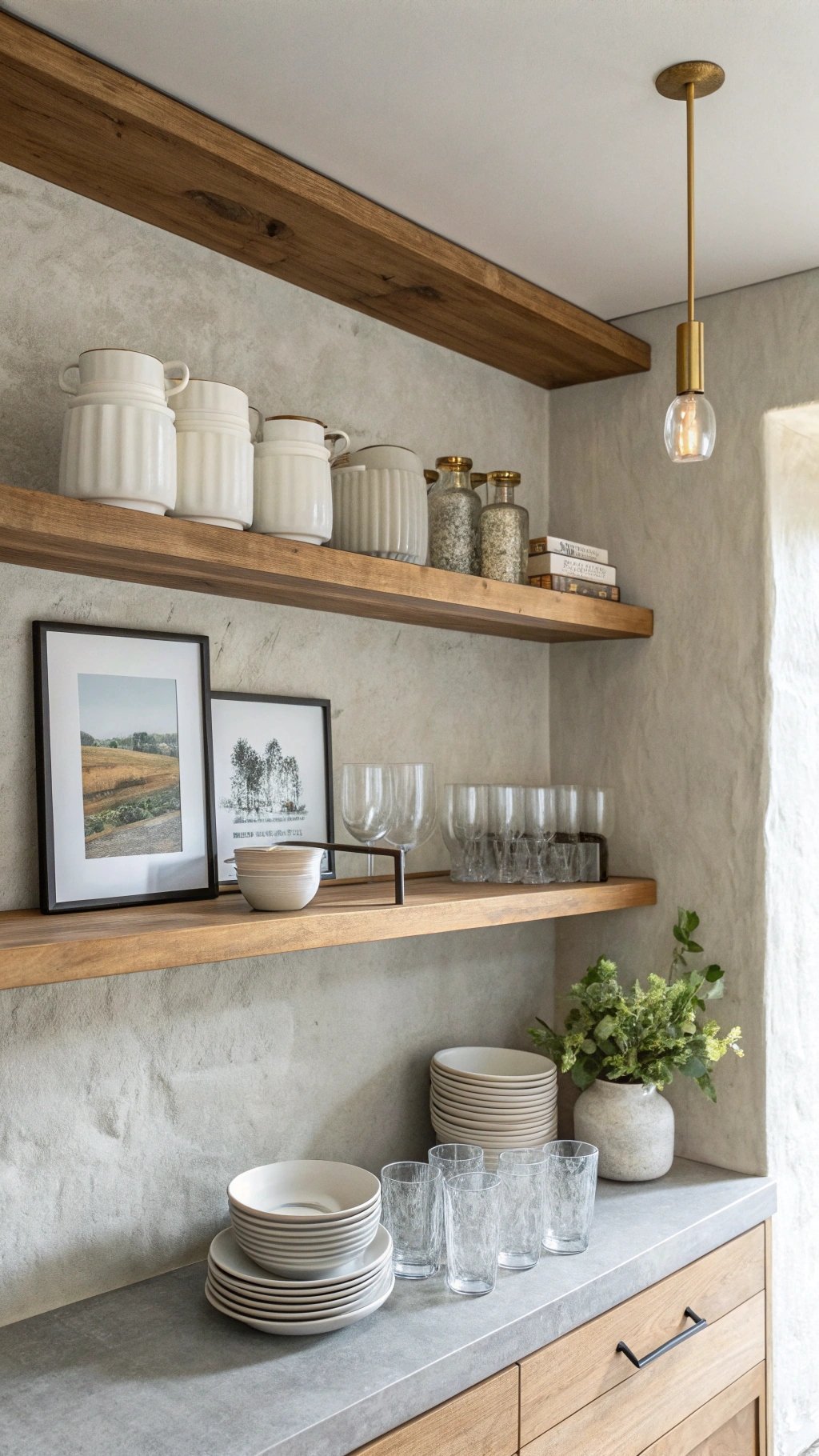
Open shelves lighten small kitchens and make daily reach items pleasant to use. Discipline is everything: repeat forms (stacked bowls, matching glassware), keep a tight color story, and group by function.
Use a shallow rail to stop slides and limit shelves to one wall so the look is intentional, not chaotic. Closed bases hide anything less photogenic.
What makes something unique:
Paint the wall behind shelves in washable satin or microcement for steam resistance, then add a petite picture light above a single framed print.
Swap shelf vignettes seasonally—citrus in winter, herbs in summer—without buying more storage. The zone reads curated and personal while staying easy to clean and reset.
4) Island Styling with Purpose
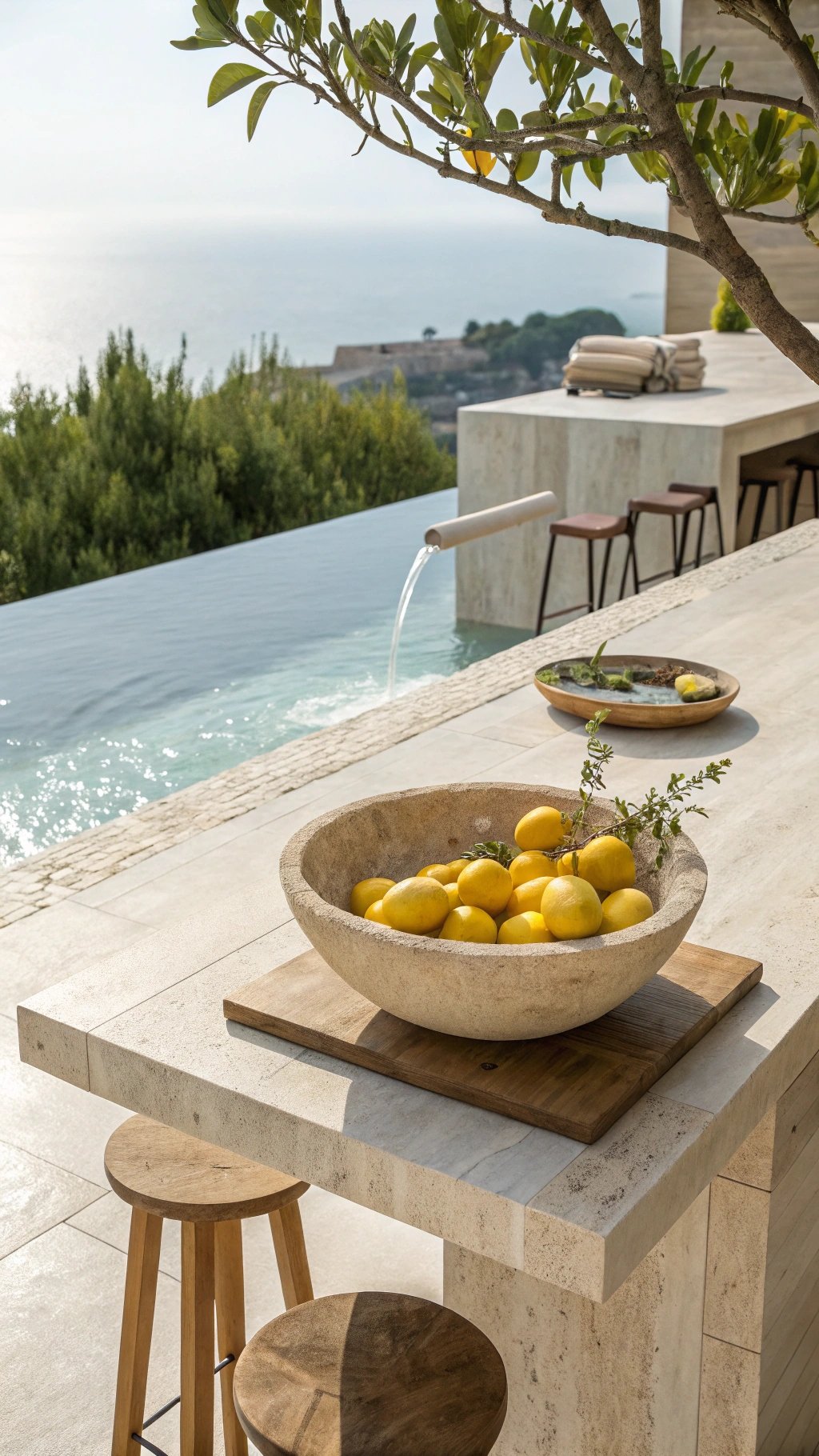
Your island is a stage. Keep a generous tray with salt, pepper, and olive oil, a stone bowl for seasonal produce, and a low floral or branch cutting that doesn’t block sightlines.
Choose a runner or petite rug only if the overhang protects edges. Edit weekly so surfaces feel fresh and ready for guests or weeknight meals.
What makes something unique:
Coordinate the tray and bowl materials with fixed finishes—travertine with limestone, walnut with oak stools—so the vignette looks integrated, not floating.
A hidden pop-up outlet inside the tray zone powers mixers on baking days, then vanishes. The result is decor that actually works hard, doubling as mise en place when you cook.
5) Art & Framed Pieces Belong in Kitchens
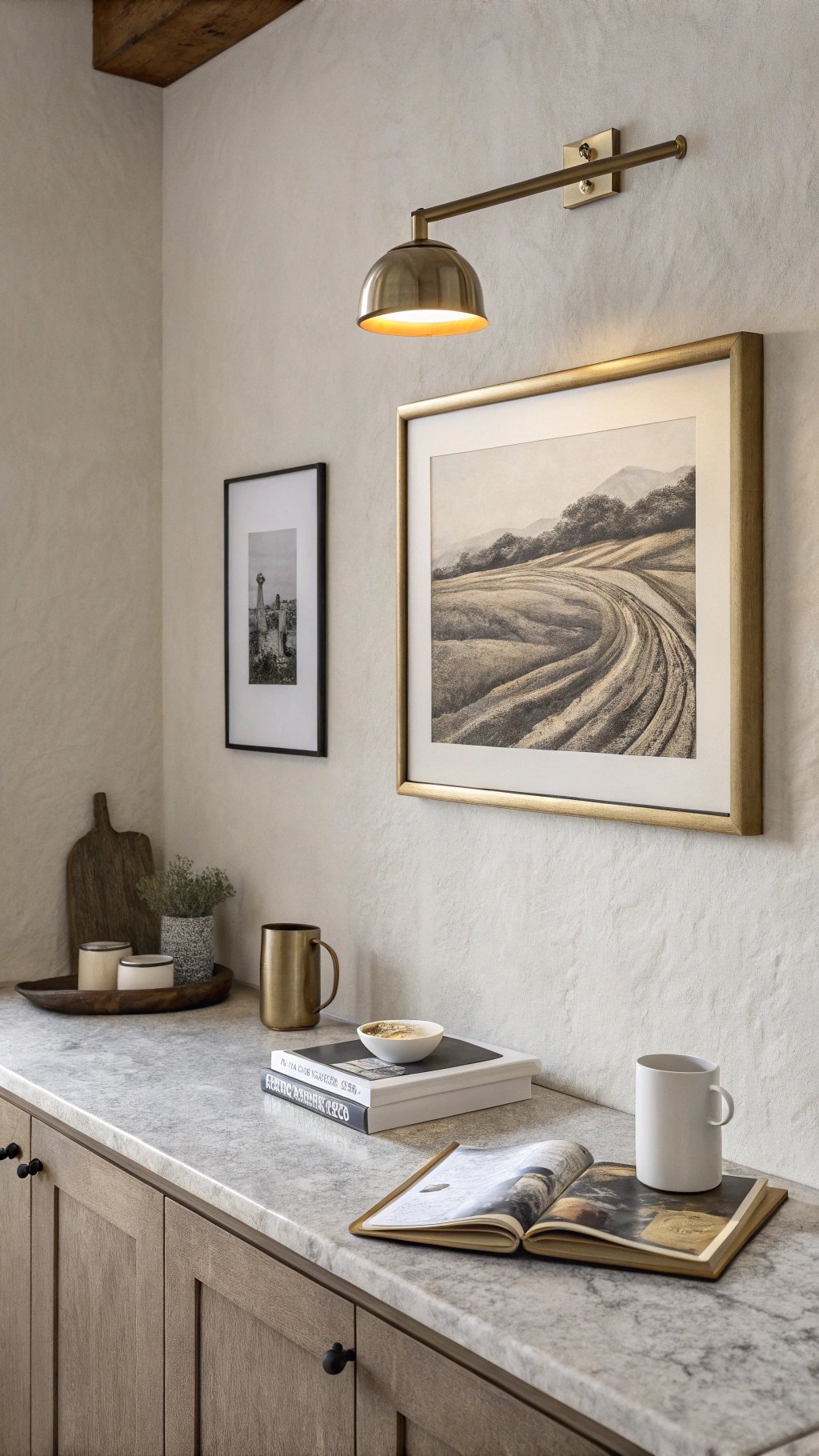
Art softens hard surfaces and makes the kitchen feel lived in. Choose pieces that tolerate moisture—a framed print behind glass, small oil on a side wall, or a vintage poster near the breakfast nook.
Hang lower than in living spaces to align with the counter horizon and keep it out of splash zones.
What makes something unique:
Add a slim picture light in a metal that matches hardware and echo one color from the artwork in a tiny accessory—linen shade, ceramic mug glaze.
Rotate art twice a year for a mood reset without touching tile or paint. The gallery note elevates routine tasks and brings personality to rental or new-build kitchens.
6) Warm Wood & Natural Fibers
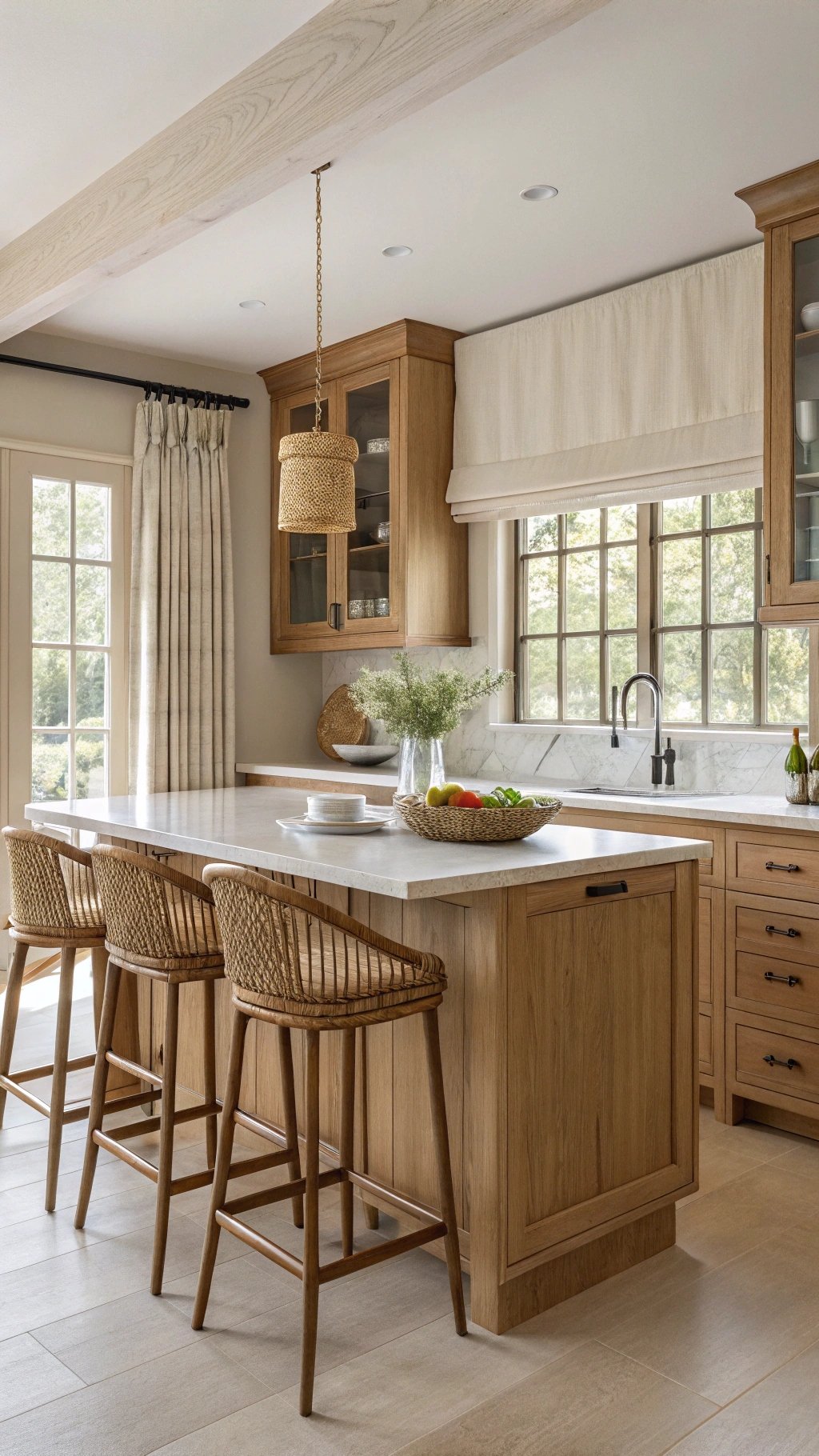
Natural materials bridge modern fixtures and everyday life. Rift-cut oak fronts, walnut cutting boards, cane stools, and linen runners add tactile warmth that ages gracefully.
Keep sheens low to avoid glare and emphasize grain. Pair with quiet stone so pattern comes from wood and weave, not busy prints.
What makes something unique:
Echo each natural material twice—oak fronts and an oak frame, cane stools and a woven basket—so the palette feels deliberate. Oil finishes make upkeep simple and patina part of the charm.
The space photographs beautifully yet forgives scuffs, proving durable materials can be your most effective decor.
7) Confident Color Pops
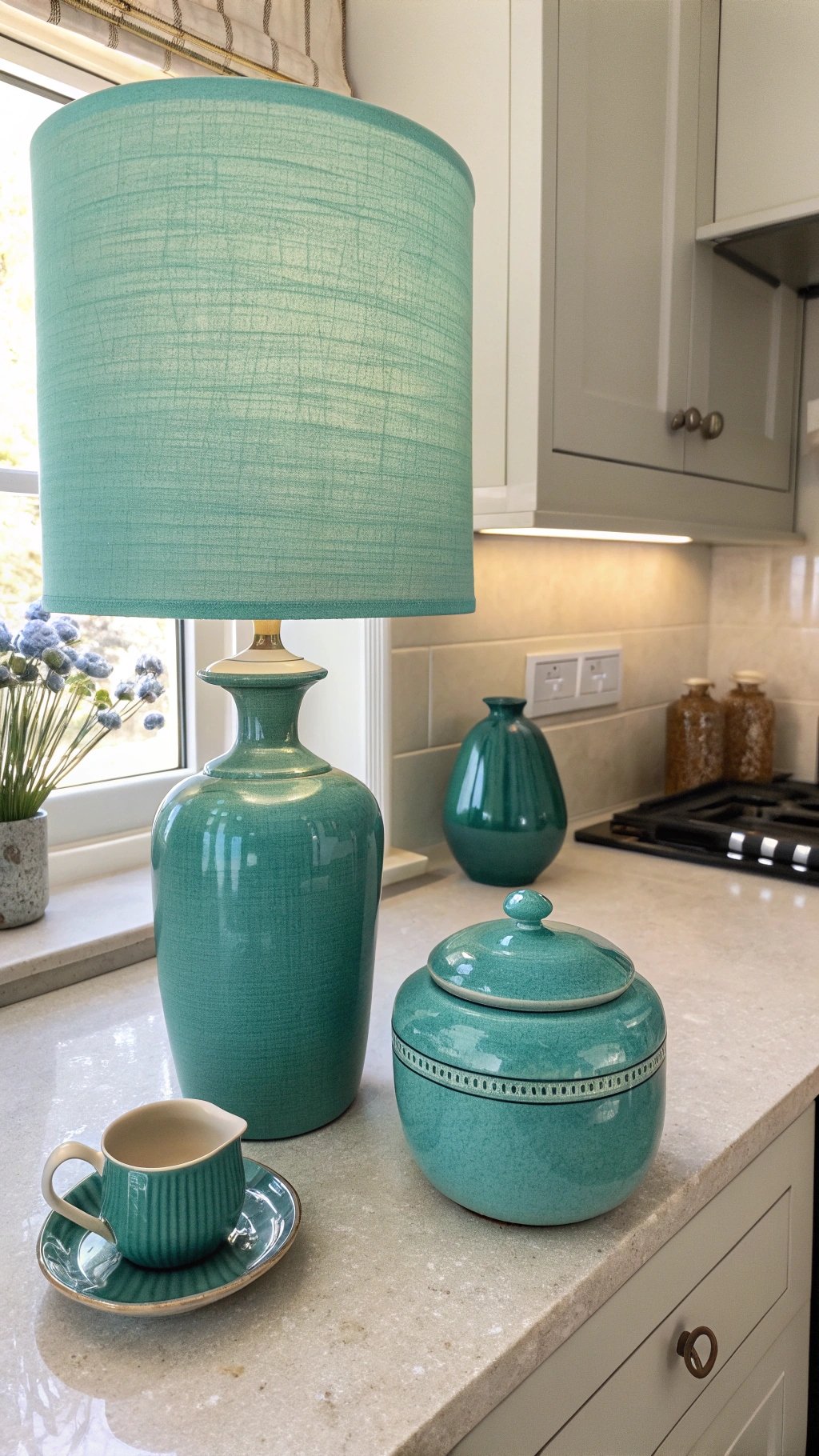
Keep a neutral base and introduce one saturated pop—tomato red utensil crock, mustard kettle, teal linen shade. Limit pops to three small hits so the room stays cohesive.
Color makes counters feel styled even on simple days and allows fast seasonal swaps without repainting cabinetry.
What makes something unique:
Repeat the exact hue across different textures—ceramic, textile, paper label—so the pop looks curated rather than random.
Place the brightest item farthest from the entry to draw the eye through the space and make the kitchen feel deeper. It’s a photographer’s trick that works in real life.
8) Mixed Metals, Low Sheen
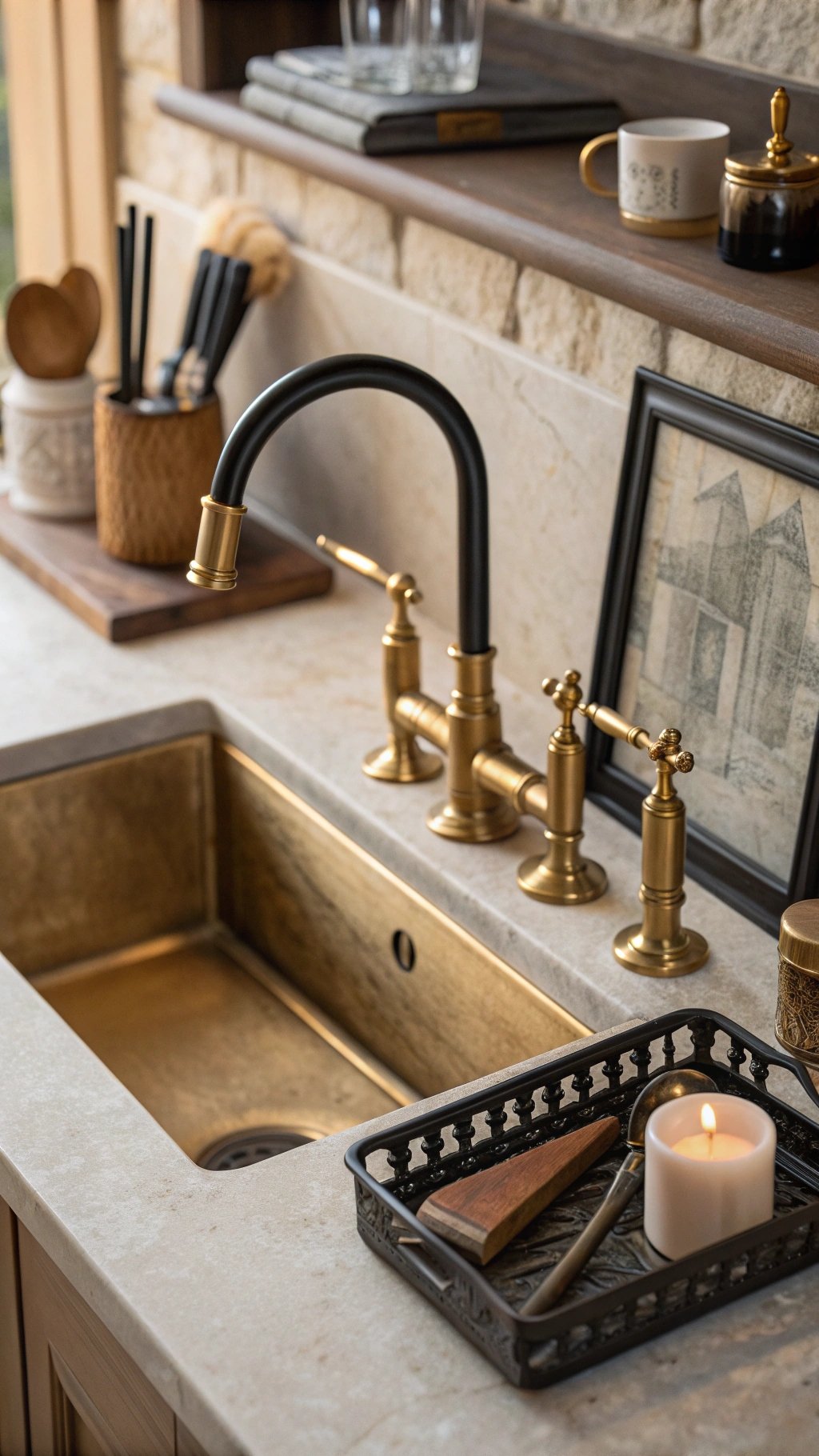
A thoughtful metal mix reads layered and bespoke. Choose one hero finish (brushed brass or graphite) and add a supporting act (blackened steel or stainless).
Keep finishes matte or satin so they glow, not glare. Repeat each metal at least twice—faucet and pulls, picture light and pot rail.
What makes something unique:
Introduce a small, antiqued mirror tray to bounce candle or lamplight at night without adding a new finish. Match screw heads and backplates to your metals to avoid visual noise.
The disciplined mix adds polish to simple cabinetry and makes the room feel collected over time.
9) Coffee & Tea Ritual Niche
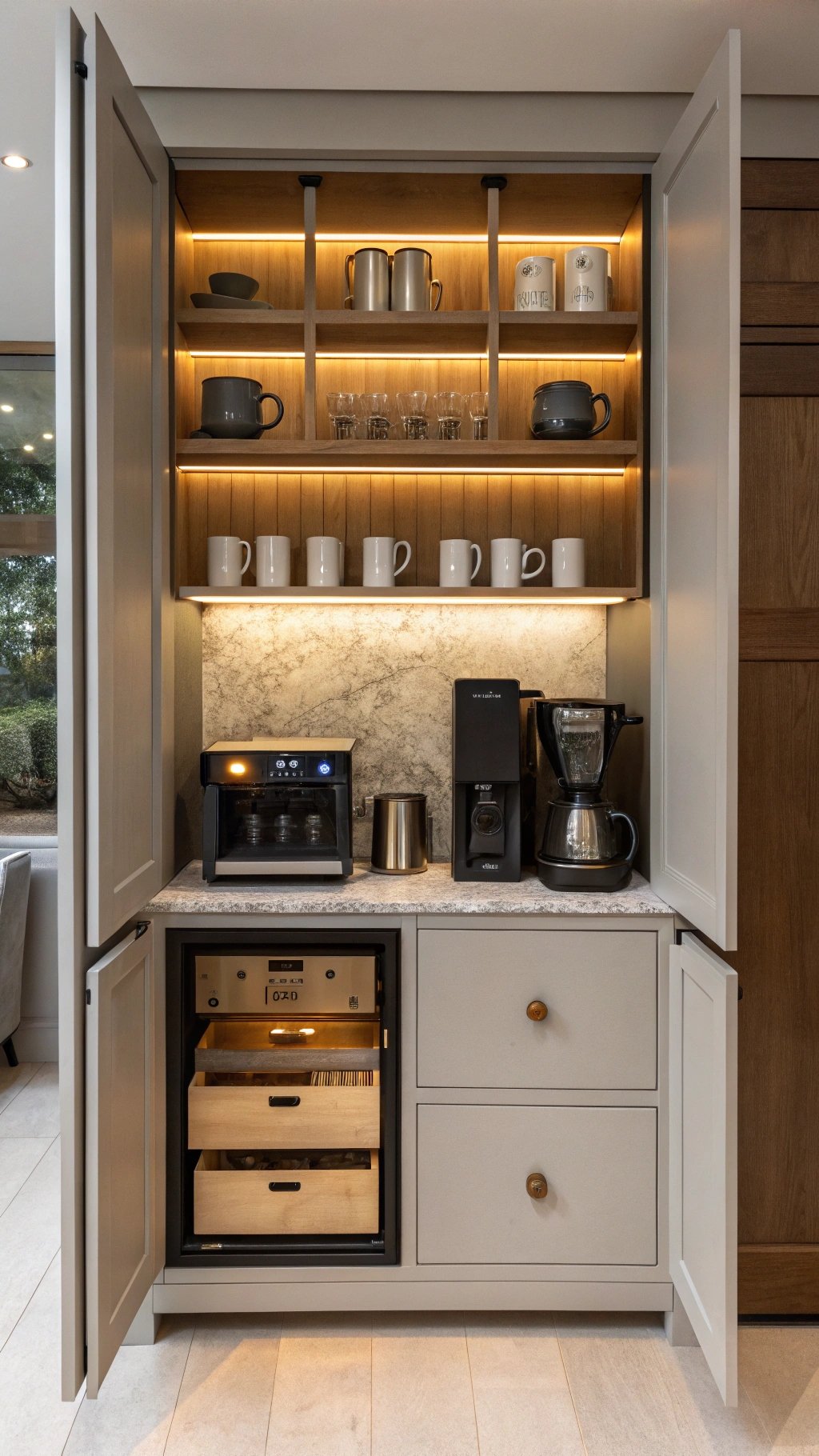
Create a daily-ritual zone that functions and looks good: a small tray for cups, canisters for beans and tea, and a compact grinder.
Keep everything at arm’s reach and store backups in a nearby drawer. When not in use, it should read like a styled vignette, not a pile of appliances.
What makes something unique:
Hide the niche behind pocket doors or a tambour appliance garage with a stone counter and door-triggered LEDs. Add a slim art tile or textured panel at the back for depth.
The reveal—open, brew, close—feels hotel-smart, keeps counters clear, and turns caffeine into quiet theater.
10) Greenery & Countertop Herbs
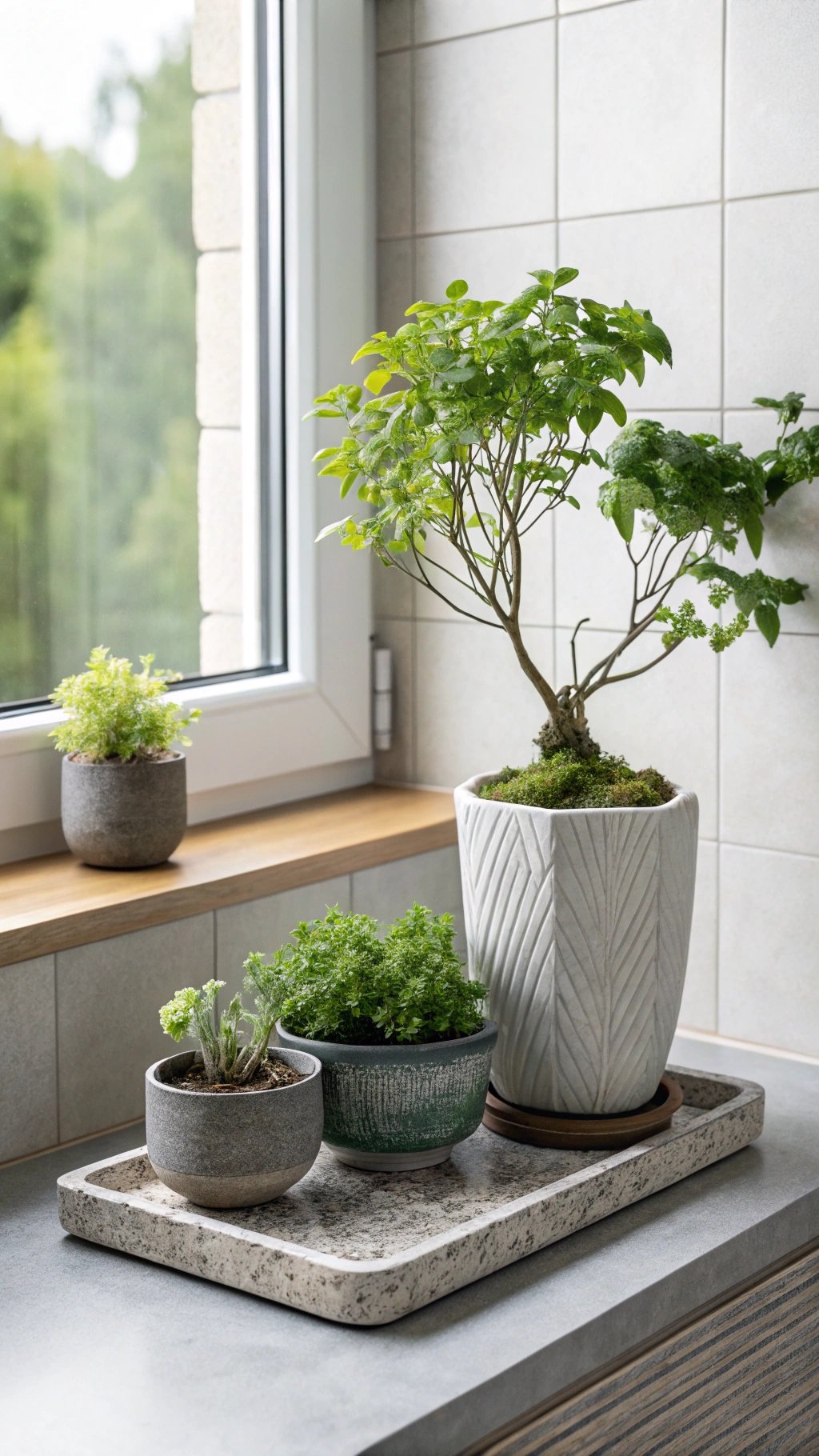
Plants soften hard edges and bring seasonal life to kitchens. Group herbs in matching pots near the sunniest spot, or choose one taller plant—olive, rubber, or a small fig—away from heat sources.
The organic forms contrast beautifully with tile grids and cabinet lines.
What makes something unique:
Set pots on a slim, water-resistant tray and add a tiny uplight on a timer for gentle evening drama. Use matte planters that echo the stone or cabinet tones so foliage remains the star.
Greenery becomes living decor that changes with the seasons and makes cooking more sensory.
11) Small Kitchen Decor That Works
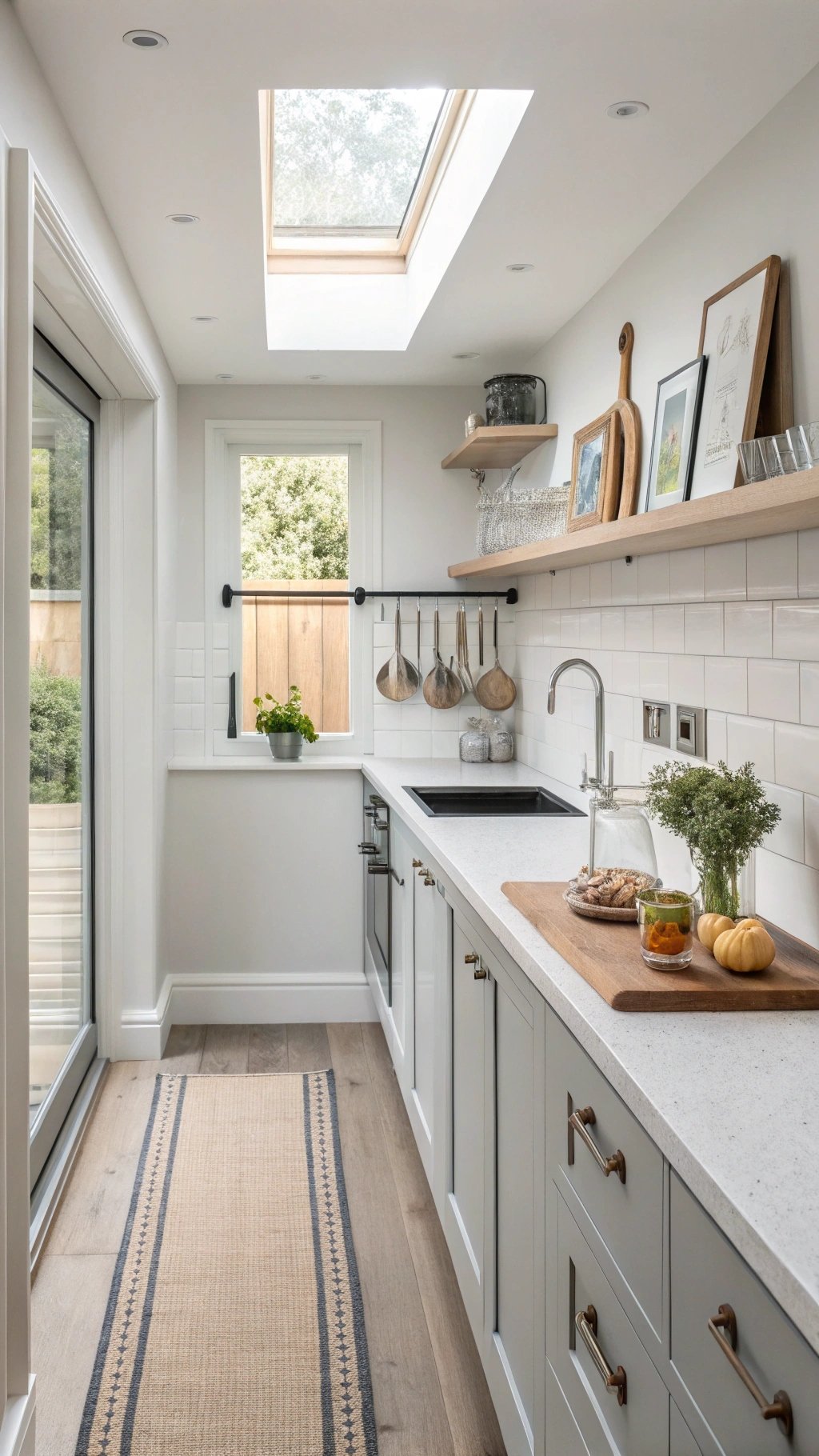
In compact rooms, decor must earn its keep. Swap bulky centerpieces for a single long board, use wall-mounted rails for pretty everyday tools, and keep a mirror or back-painted glass backsplash to bounce light. A narrow runner anchors the galley visually and softens footsteps.
What makes something unique:
Mount a petite picture ledge at counter height to rotate one framed recipe, a candle, and a bud vase; it clears easily for deep cleans.
Choose collapsible or nesting accessories that store vertically. The space reads edited and intentional—proof that small kitchens can still feel styled.
12) Sustainable & Vintage Touches
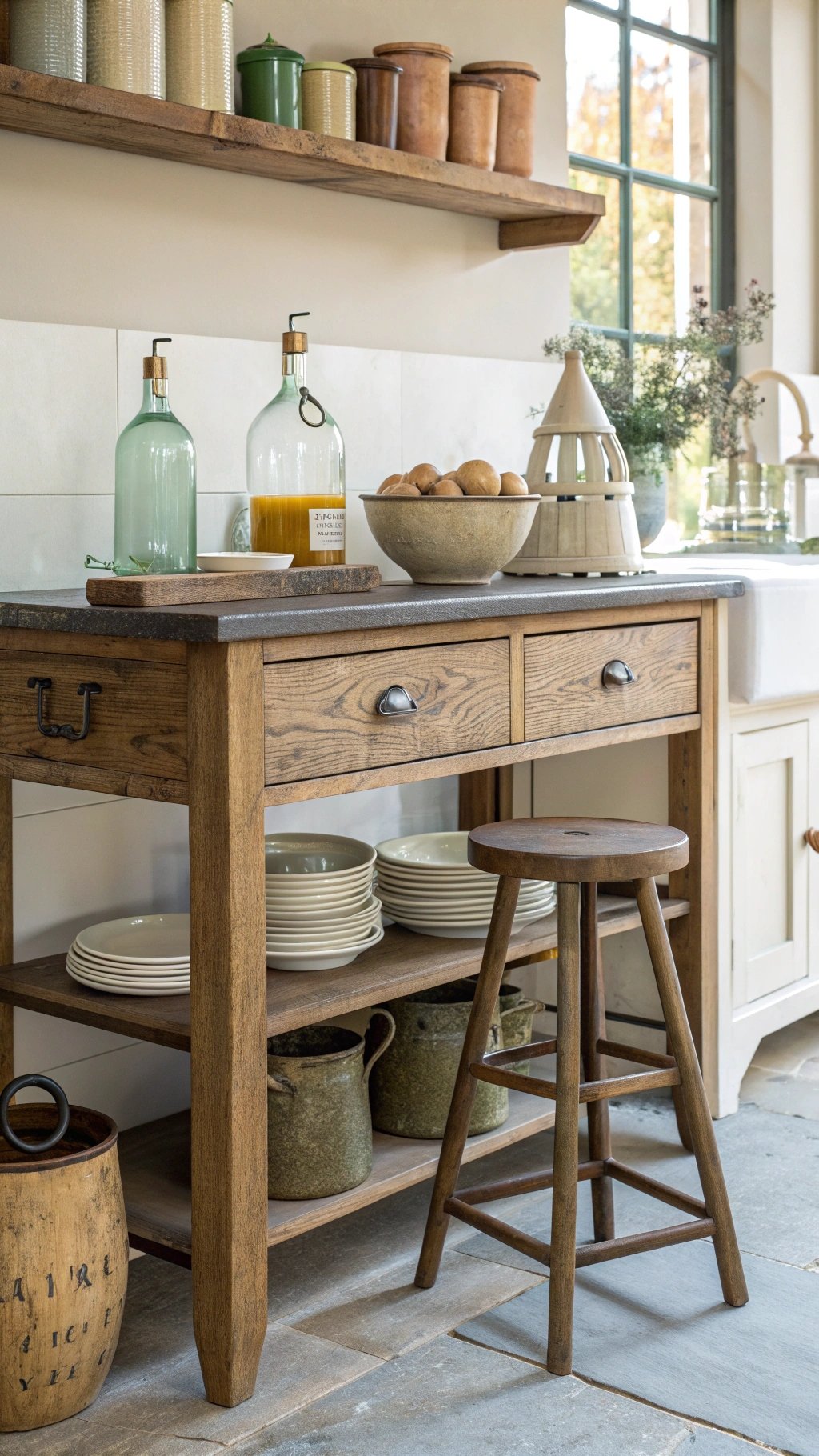
Eco-minded decor adds character and conscience. Mix a vintage stool, reclaimed wooden tray, and secondhand ceramics with new essentials.
Choose refillable glass bottles for soap and pantry staples to reduce labels and visual noise. Solid metals and natural fibers age gracefully, making the room richer year after year.
What makes something unique:
Tell the provenance story: a tiny card or stamped mark on the underside of a tray, visible joinery on reclaimed shelves, and a labeled refill station inside a pull-out.
High-CRI LEDs keep colors honest, celebrating patina rather than hiding it. Sustainability becomes part of the aesthetic—not an afterthought.
Quick Tips to Nail Kitchen Decor
Pick one hero move (backsplash, lighting, or island vignette) and echo it twice.
Repeat materials deliberately—wood, stone, metal—so the palette feels curated.
Edit weekly; great decor is as much subtraction as selection.

